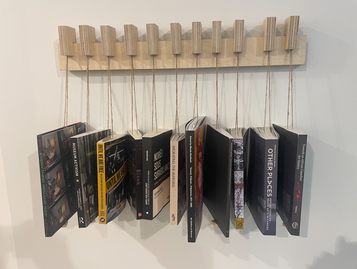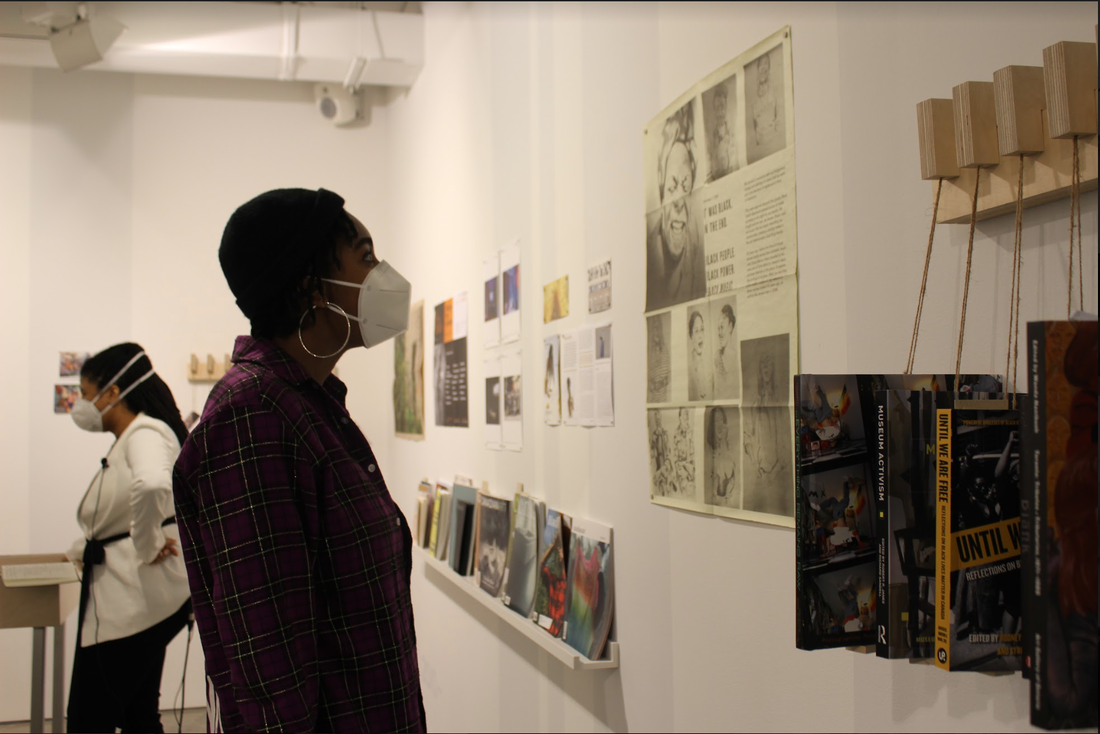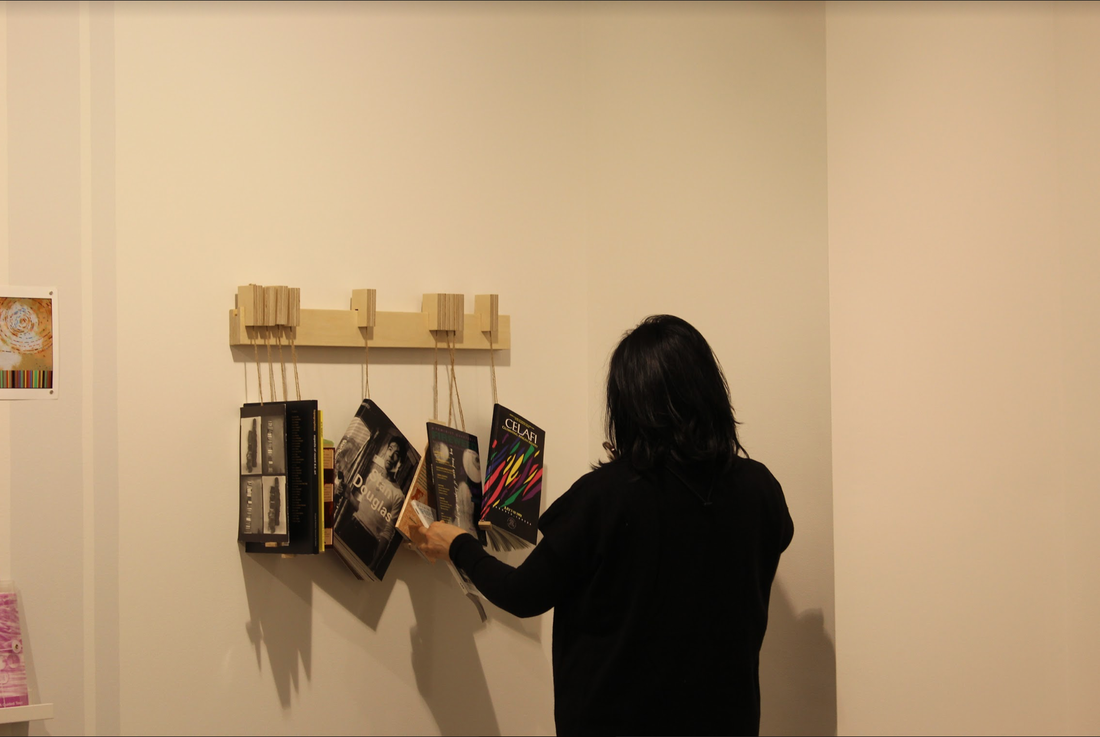|
Date: 2021-09-23 Author(s): Nicholas Raffoul Editor(s): Ra’anaa Brown, Koby Rogers Hall, Karina Roman This post marks the third week of our newfound Afrofuturism-BLM research group under the supervision of Dr. Ming Wai Jim. While we continue to work on administrative tasks for our project, these past few weeks have been fundamental to assembling a stable and ethical foundation for our forthcoming research. Our team has been discussing important details about how we will be organizing, managing, and presenting our prospective academic scholarship and assessing best practices for an ethical research process. More specifically, we are evaluating reference management softwares to manage our bibliographic data, looking into several options for ethical and efficient citation management that would be most suitable for our long-term research process. We are also considering the different streams to present updates on our progress, looking into options to curate and put forward our research, including social media platforms and a website. This early stage of our research project includes tasks spanning from planning out best practices for recording meeting notes to effectively communicating between our team of research assistants and our project supervisor, Dr. Ming Wai Jim. Our objective for these preliminary weeks of the research process is to build a functional archive of our progress, and a framework for academic scholarship on Black Lives Matter and Afrofuturism taken on with care and mutual understanding between the members of our team. This week, Ra’anaa, Koby, and Karina attended an insightful workshop, “The Dangers of Everyday Oral History Interviewing: Building and Breaking Trust in the Field,” led by Dr. Stacey Zembrzycki, an oral and public historian of immigrant and refugee experience, who has published and co-edited several works including According to Baba: A Collaborative Oral History of Sudbury’s Ukrainian Community and Oral History Off the Record: Toward an Ethnography of Practice. Dr. Zembrzycki posed crucial questions regarding intimacy in an oral history context, and what roles intimacy plays in the ethical processes of oral history interviewing and research, drawing on her own fieldwork experiences. The workshop was a critical introduction to the ethics of oral history and it brought up several important considerations for us to evaluate before embarking on groundwork research, including intimacies in interviews as well as questions of safety for both the interviewer and interviewee. Dr. Zembrzycki raised important questions on the research process, such as accommodations to make when interviewing colleagues of marginalized backgrounds, and situating the interviewer herself, including, BIPOC, women, and those identifying as LGBTQ2S. I am looking forward to continuing our work and reflecting on our research practices as we build a framework of ethics and care for this research project. As Willie Ermine aptly puts it, “inevitably, we come to the realization that the ethics of research are all about empowerment,” (Ermine 203). While we continue working on administrative tasks and building a strong base for our upcoming weeks, I am honoured to be working with Ra’anaa, Koby, Karina, and Dr. Ming Wai Jim, who I have already learned so much from these past few weeks. I am eager to continue working with the team and attending more relevant workshops in order to build trustworthy research that brings awareness to Black Lives Matter and Afrofuturism within the Canadian context. Very best, Nicholas Raffoul, MA Candidate in Art History Research Assistant
0 Comments
Date: 2022-08-29 Author(s): Koby Rogers Hall Editor(s): Ra’anaa Brown, Nicholas Raffoul, Koby Rogers Hall Thanks Karina! This week I want to write/think through extractivist relationships as research. Stumbling through a conversation with Alice I recently returned to Harsha Walia’s analogy, that our relationships to settler colonialism are modelling our relational dynamics with one another. That in fact we internalise Walia’s principles of border imperialism in our ways of being together: much like the dependency of present-day colonial states to rely on the resource extraction and dispossession of indigenous territories, we as researchers, writers and oftentimes activist are very used to taking from one another, borrowing without asking, and relying on the knowledge outputs of others for our own survival. It is interesting to me in this second year of my PhD research to return and revisit practice and theories that have sustained me thus far - from migrant justice movement organising, to critical art practices, to archiving as cultural activism. With another one of my (patient) supervisors I am continually reconciling my choice to do activist research within institutional walls, and to maintain critical interventions when accessing the rooms of power, white supremacy and so-called authority. And still as a white cis female, able-bodied, young mother, artist and activist researcher, I maintain how lucky I am to be working on this project with you all. And that the best way forward for me is to write with you and not for the project. Karina speaks authentically to the multiple timeframes and project legacies the ARC-ABLM teams inherit, while reflecting on the methodologies that will frame our proceedings: “what is it that this project is giving to the Canadian Black community?”, she asks us, “and how?” And so I am thinking aloud with you, Ra’anaa, Karina, Nick, and anyone reading this:
On the above I can say that data management becomes a contentious issue, and perhaps this is why Ra’anaa and I have been slow to start on this design: who will we be interviewing, yes, but how will their thoughts be organised? How are databases dysfunctional (and I hope to hear more from Alice on this)? And when we talk about research ethics and consent concerns, where are the relationships in this data mining? Hopefully these are instabilities we can rectify through ongoing training, and our continued collaborative writing assignments. Ra’anaa calls in a reminder to familiarise ourselves with intersectional frameworks, as these are at the forefront of BLM and Afrofuturist movements. In reading the research curation article proposed as methodology for the larger ABLM project - which I am looking forward to us discussing as a group - I want to look into how each of us positions ourself in this critical curation and relationship to the work, to the people whose lives and creative practice this project touches. I want to hear from you - your thoughts and feelings - on how each one of us can do the work of building right relationship, with ourselves, with our collaborators, and with the future constellations we wish to see. Koby Rogers Hall, PhD Humanities Candidate Research Assistant Date: 2021-10-10 Author(s): Karina Roman Editor(s): Ra’anaa Brown, Nicholas Raffoul, Koby Rogers Hall Time seems to be flying by, and the fourth week of the Afrofuturism-BLM research group has already brought many new items and events to attend. I must admit that charts and minutes’ documents are still quite intimidating to me, even overwhelming at times; after all, there is so much to take into account when working as a team while thinking of the ethical implications our future interviews will hold. Still, I am grateful for the guidance of Dr. Alice Ming Wai Jim and my fellow researchers, who help me to not be overtaken by it and to remain focused on the key tasks to carry forward this research project. The way I see the ABLM research unfolding, is in a non-linear path. For example, we continue to exchange messages with the founding members of the Afrofuturisms Research Collective (ARC) to make this project a continuation of their legacy. Such regard in the past is core to our own process, because we are not only thinking of the historical legacy this project is building on, but to the most recent inputs and efforts done by our immediate community. A great way to connect respectfully with Afrofuturists and BLM agents. The look at the present is embodied through our collaborative pieces and most technical document making in constant editing, commenting and ideas exchange. The future is the planning and the expectations of upcoming events and the fruits of this research in the long term. All of this happens simultaneously, assembling the project itself. Two of our members already had the chance to participate in two different events. Ra’anaa attended The Goose Village Project: Photography, Research-Creation, and Oral History on September 28, this was part of her Spatial Places, Spatial Practices course. There she was able to get more insights on oral histories and learn about Goosse Village, a neighbourhood demolished to make way for aspects of Expo 67; currently the site is a parking lot. This fact leads to reflect on oral history’s role to tell and make the stories of the people involved known. Koby attended the Dismantling Eugenics convening, specifically panels on deconstructing politics of beauty (with panelists Patty Berne, Mx. Alok Vaid-Menon, and Sean Saifa Wall) and constellations of future practices (with Adrienne Marie Brown and Cara Page). Both conversations seek to engage and embody the dismantling of ongoing legacies of eugenic policies manifest in contemporary aesthetics, ableism in the arts, academic and activist worlds. During the upcoming weeks, the ABLM team will not be holding meetings since all of us will be attending conferences likely to provide great information and knowledge for our research and own practices. The selection of these conferences was decided through a critical lens that did not only took into account the themes of each session, but the way these events have been articulated. After a general consensus we signed up for: Amsterdam Assembly: Letting Go of Having to Speak All the Time , UAAC/AAUC Conference 2021 and BLACK PORTRAITURE[S]: Toronto, Absent/ed Presence, 2021. We are looking forward to listening to the speakers and sharing our insights about these events. One pending item is strategically structuring our data curation plan, for we want to make our research and the process it entails, useful for those following us as well. Research curation is a very important aspect of the ABLM endeavor, so it is necessary to create a cohesive and coherent dissemination methodology and plan, by choosing the proper tools and social media platforms out there. If you, dear reader, are thinking about these issues, please leave your thoughts and comments below. We would love to read them! Stay tuned for Koby’s very first blog entry. Best, Karina Roman, MA Candidate in Art History Research Assistant  Date: 2022-08-29 Author(s): Karina Roman Editor(s):Nicholas Raffoul, Koby Rogers Hall, Aman Sandhu Back in the exhibition space of Blackity at Artetext we found ourselves surrounded by posters, publications of all sorts, and books, either hanging from customized wall holders or on display tables in the middle of the room. These records on Canadian Black artists and activists were organized chronologically, but somehow their placement evoked circularity, since arriving to the “end” of the timeline meant lopping back to its beginning in a physical way. This set up of an archive provides another type of reception of the content, conjointly with the subtle lines painted on the wall – the thickness of each of them representing the amount of records found on a certain period of time, a bar chart that helps the visitor to visualize the quantities of the data throughout time, a kind of codification integrated into the walls of Blackity. This curatorial choice left me wondering: what can this type of data visualization communicate when shown outside conventional modes of display (such as paper documents or screens), specially when it builds the space housing that very information? This question speaks directly to ABLM researchers, as research curation is among our tasks and is part of this project’s process. Dr. Joana Joachim’s Blackity in this sense does not only represent a great source for our research, but a great example of research curation (outside of the digital) that renders the information not only visible, but accessible through more creative ways of sharing this archive. Employing haptic qualities and playfulness through inviting design that engages more than one sense. This added to its virtual iteration which you can visit anytime through this link: Blackity [en-ligne]. What type of curation would fit the diverse date gathered by the ABLM team? Sometimes it can be overwhelming encountering all this information at once. And we must be honest, there is a cumulative aspect of research that makes it seem static at times. As if by reading tons of sources, collecting names on charts, and tagging all through categories, we are just hoarding information, feeding databases. This phase of the research often oscillates between a feeling of density when accumulating info, or excitement/stimulation when encountering new ideas, theories, or anything that brings life to the project. But either the case or the mood what must never be forgotten is that for this research data is people. It is easy to forget about what lies behind numbers or databases, so it must become an exercise to remember this, since they represent an activist, artist and/or community member. How we decide to activate this info should honour this human dimension. Now I will rephrase my previous questions: What types of visualization (or other senses engagements) would be appropriate to organize and share the information and data organized by our research? What kind of tool can be used for mindful research curating in order to make this available and accessible for Black folks that could benefit from this research, and to you? Those are a few questions I pose, as I pass the torch to the new team members to come. Best, Karina R.J. |
AuthorArchives
December 2022
Categories |
Concordia University is located on unceded Indigenous lands. The Kanien’kehá:ka Nation is recognized as the custodians of the lands and waters on which we gather today. Tiohtiá:ke/Montreal is historically known as a gathering place for many First Nations. Today, it is home to a diverse population of Indigenous and other peoples. We respect the continued connections with the past, present and future in our ongoing relationships with Indigenous and other peoples within the Montreal community.
For more information, please visit: https://www.concordia.ca/about/indigenous/territorial-acknowledgement.html
Credits: EAHR's logo was created and designed by Adrienne Johnson, co-founder of EAHR / notre logo a été créé par Adrienne Johnson, co-fondatrice de EAHR.
Copyright © 2018





 RSS Feed
RSS Feed